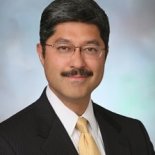Fortunately, understanding of the biology of aging has improved. Heart and blood vessel health is knowable, measurable, and manageable -- including stroke.
Facts about stroke:
- Stroke kills about 140,000 Americans each year—that’s 1 out of every 20 deaths.
- Someone in the United States has a stroke every 40 seconds. Every four minutes, someone dies of stroke.
- Every year, more than 795,000 people in the United States have a stroke. About 610,000 of these are first or new strokes.
- About 185,000 strokes—nearly 1 of 4—are in people who have had a previous stroke.
- About 87% of all strokes are ischemic strokes, in which blood flow to the brain is blocked.
- Stroke costs the United States an estimated $34 billion each year. This total includes the cost of health care services, medicines to treat stroke, and missed days of work.
- Stroke is a leading cause of serious long-term disability.
- Stroke reduces mobility in more than half of stroke survivors age 65 and over.
Bonus
Opioid-Free Ways to Beat Pain
